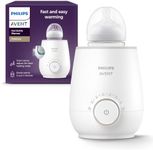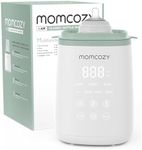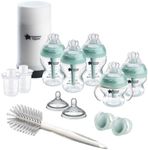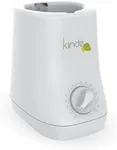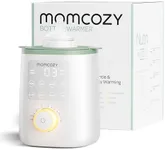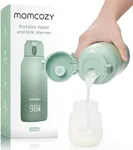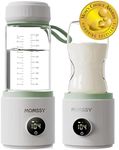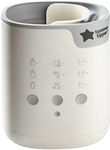Buying Guide for the Best Bottle Warmers
Choosing the right bottle warmer can make feeding time much easier and more convenient, especially for parents and caregivers. The main goal is to safely and efficiently warm milk or formula to the right temperature for your baby, without overheating or creating hot spots. When picking a bottle warmer, it's important to consider how and where you'll use it, what types of bottles you have, and any extra features that might make your routine smoother.Heating MethodThe heating method refers to how the bottle warmer heats the milk or formula. Common methods include steam, water bath, or even dry heat. Steam warmers are usually faster but can sometimes heat unevenly, while water bath warmers tend to be gentler and more consistent. If you need quick warming, steam might be best, but for more delicate warming (especially for breast milk), a water bath is often preferred. Think about whether speed or gentle heating is more important for your needs.
Warming TimeWarming time is how long it takes for the bottle warmer to bring milk or formula to the right temperature. Some warmers can heat a bottle in just a few minutes, while others take longer. If you often need to prepare bottles quickly, a faster warming time is helpful. However, if you usually plan ahead or want to avoid overheating, a slightly slower but more controlled warmer might be better. Consider your daily routine and how urgently you’ll need bottles ready.
Bottle CompatibilityBottle compatibility means which types and sizes of bottles the warmer can handle. Some warmers fit only standard bottles, while others can accommodate wide-neck, angled, or even pouches. If you already have bottles, check that the warmer fits them well. If you use different types or plan to switch brands, look for a more universal design. Matching the warmer to your bottles ensures a snug fit and even heating.
Temperature ControlTemperature control is about how precisely you can set or monitor the warming temperature. Some warmers have preset settings, while others let you choose the exact temperature. Precise control is especially important for breast milk, as overheating can destroy nutrients. If you want peace of mind or need to warm to specific temperatures, look for a model with adjustable or digital controls. If you’re less concerned, a simple preset model may be enough.
PortabilityPortability refers to how easy it is to use the bottle warmer outside your home. Some models are compact and can be powered by car adapters or USB, making them great for travel or outings. Others are designed mainly for home use and need a wall outlet. If you’re often on the go, a portable option is useful. If you’ll mostly use it at home, a larger or less portable model may be fine.
Ease of CleaningEase of cleaning is about how simple it is to keep the bottle warmer hygienic. Some warmers have removable parts or wide openings that make cleaning easy, while others may require more effort to prevent buildup or mold. If you want to minimize maintenance, look for a design that’s easy to take apart and clean. Regular cleaning is important for your baby’s health, so consider how much time you’re willing to spend on this task.
Extra FeaturesExtra features can include things like automatic shut-off, timers, night lights, or the ability to warm food jars. These features can add convenience and safety, such as preventing overheating or making nighttime feedings easier. Think about which extras would actually make your life easier and focus on those, rather than being swayed by features you won’t use.
